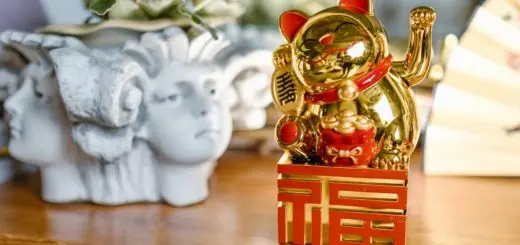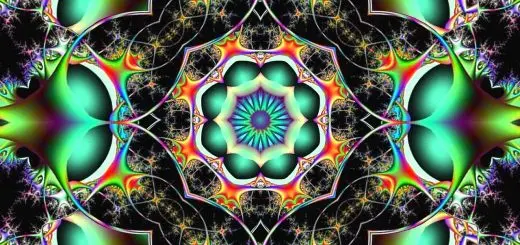Discover the Basics of Chinese Feng Shui

Looking for more amazing products? Check out our online store and explore our collection here! Happy shopping!
Before diving in, please note: This post is for informational purposes only. If you’d like to know more about how we approach topics, feel free to check out our friendly Disclaimer Page.
Hey there, amazing readers! 
We’re committed to delivering quality posts, and your support (even just sticking around despite the ads) means everything to us. So, bear with us, and thanks for helping us keep the good vibes rolling. Now, on to the fun stuff!
TRANSLATE BUTTON AT THE END OF THE ARTICLE
A Quick Overview
Have you ever walked into a room and felt an immediate sense of calm or, conversely, a wave of discomfort?
That feeling might just be a result of Feng Shui, an ancient Chinese practice rooted in finding balance and harmony in our living spaces and, by extension, our lives.
In this article, we’ll dive deep into the foundational aspects of Feng Shui, exploring its principles, philosophy, and practical applications.
So, let’s embark on this enlightening journey together!
What is Feng Shui? An Introduction to Ancient Wisdom
Feng Shui, which translates to "wind and water," is a practice that seeks to create harmony between humans and their environments.
It’s an art form that blends philosophy with practical living.
Imagine your space as a living entity, one that can either uplift your spirit or drain your energy, depending on how well it’s arranged.
Feng Shui focuses on optimizing this energy flow to promote balance, health, and prosperity.
At its core, Feng Shui is about understanding how our surroundings affect us.
Ever noticed how a cluttered space can make you feel stressed?
Conversely, a well-organized and thoughtfully decorated area can spark creativity and peace.
By applying Feng Shui principles, we can create spaces that nurture our well-being and align with our goals.
Feng Shui is not merely about aesthetics; it’s about the energy or "Chi" that circulates around us.
The arrangement of furniture, the colors we choose, and even the materials we use can all influence this energy flow.
It’s a holistic approach that considers the physical, emotional, and spiritual aspects of our lives.
So, whether you’re looking to boost your career, enhance your relationships, or bring more joy into your home, Feng Shui offers practical solutions.
It’s like having a roadmap to navigate the complexities of life through the spaces we inhabit.
The Origins of Feng Shui: A Journey Through Time
Feng Shui has roots that stretch back over 3,000 years, deeply embedded in Chinese culture.
Its origins can be traced to ancient Chinese geomancers who studied the land and its elements.
They observed how the placement of mountains, rivers, and valleys influenced the living conditions of communities.
This early understanding of environmental harmony formed the basis of Feng Shui.
Historically, Feng Shui was utilized to determine the best locations for cities, homes, and tombs.
The idea was that a well-placed dwelling would attract positive energy and prosperity, while poor placement could lead to misfortune.
As these practices evolved, they were incorporated into architecture, town planning, and even agriculture.
By the Han Dynasty (206 BC – 220 AD), Feng Shui was being formalized as a discipline.
Texts began to emerge, detailing the principles and practices that we know today.
The Song Dynasty (960-1279 AD) saw Feng Shui gain popularity among the elite, with scholars and practitioners writing extensively about its applications.
In contemporary times, Feng Shui has transcended cultural boundaries.
People from various backgrounds are drawn to its wisdom, finding value in its teachings.
It’s fascinating how ancient concepts can resonate with our modern lives, helping us create spaces that encourage peace and prosperity.
Understanding Chi: The Energy That Influences Us
Chi, pronounced "chee," is the lifeblood of Feng Shui.
It’s the energy that flows through everything, including us.
Think of it as the invisible thread that connects all living things.
In Feng Shui, the goal is to cultivate and encourage positive Chi while mitigating negative influences.
Chi can be categorized into two types: “Sheng Chi,” which is positive and nourishing, and “Sha Chi,” which is negative and harmful.
We want to attract Sheng Chi to our lives.
This positive energy can boost our mood, enhance our creativity, and invite good fortune.
One way to invite Sheng Chi into your space is by ensuring a good flow of energy.
This can be achieved by minimizing clutter and arranging furniture in a way that promotes easy movement.
Have you ever felt stuck in a corner of a room?
That’s Sha Chi blocking your path!
Another aspect of Chi is its connection to nature.
Natural light, fresh air, and greenery all contribute to uplifting energy.
Incorporating plants into your space not only adds beauty but also enhances the flow of positive Chi.
In my own experience, placing a vibrant plant near my work desk has brightened my mood and boosted my productivity.
Understanding and working with Chi can transform our environment into a sanctuary that supports our well-being.
It’s about aligning our physical spaces with our emotional and spiritual needs.
The Five Elements: Wood, Fire, Earth, Metal, Water
One of the fundamental concepts in Feng Shui is the theory of the Five Elements: Wood, Fire, Earth, Metal, and Water.
Each element embodies different qualities and corresponds to various aspects of our lives.
Understanding these elements can help us create balance in our spaces.
Wood: Symbolizing growth and vitality, wood relates to family and health.
Think of lush plants and wooden furniture.
Incorporating wood can enhance creativity and progress.
Fire: Representing passion and energy, fire is linked to fame and recognition.
Candles and bright colors can introduce this element, igniting enthusiasm and motivation.
Earth: The stabilizing force, earth represents stability and nourishment.
It’s associated with relationships and grounding energy.
Natural stones, pottery, and earthy colors can enhance this element.
Metal: Linked to clarity and precision, metal corresponds to knowledge and wisdom.
Incorporating metal objects can promote focus and clarity in decision-making.
Water: Symbolizing abundance and flow, water is connected to wealth and career.
Aquatic decor or blue tones can encourage prosperity and opportunities.
By balancing these elements in our spaces, we can create a harmonious environment that supports our aspirations.
Have you ever rearranged a room and felt an immediate shift in energy?
That’s the magic of the Five Elements in action!
The Bagua Map: Your Guide to Spatial Awareness
The Bagua map is a powerful tool in Feng Shui that helps us understand the different areas of our lives and how they are influenced by our environment.
The map is divided into nine sections, each representing a specific aspect of life, such as wealth, love, and health.
To use the Bagua map, start by overlaying it on your floor plan.
Each area corresponds to specific colors, elements, and shapes.
Here’s a quick breakdown:
Wealth & Prosperity (Southeast): Incorporate plants and purple tones.
Fame & Reputation (South): Use red and triangular shapes.
Love & Relationships (Southwest): Add pink and earthy tones.
Health (Center): Emphasize balanced elements and colors.
Creativity & Children (West): Utilize white and round shapes.
Knowledge & Wisdom (Northeast): Incorporate blue and light colors.
Career (North): Use black and reflective surfaces.
Helpful People (Northwest): Incorporate gray and metal elements.
Family & Community (East): Use green and vertical shapes.
By aligning your space with the Bagua map, you can address specific areas of your life.
It’s like having a personalized guide that helps you target your Feng Shui efforts effectively.
I remember when I focused on enhancing my career area; I rearranged my workspace according to the map and immediately felt more motivated and driven.
Yin and Yang: Balancing Opposing Forces in Life
Ah, the age-old concept of Yin and Yang.
This philosophy teaches us about the balance of opposing forces.
Yin is associated with femininity, calmness, and receptivity, while Yang represents masculinity, action, and assertiveness.
In Feng Shui, achieving harmony between these two energies is crucial.
Think of Yin as the tranquil space where you unwind and recharge.
It’s the cozy nook with soft lighting and plush cushions.
Yang is the energetic, lively area where you work or socialize, filled with vibrant colors and active decor.
Both energies are essential for a balanced life.
When spaces are dominated by either Yin or Yang, we can feel out of sorts.
Too much Yin can lead to lethargy, while too much Yang can foster chaos.
It’s all about finding that sweet spot.
For example, if your living room is bright and boisterous (Yang), you might want to introduce softer colors and textures to invite some Yin energy.
In my experience, I’ve found that creating a balance in my bedroom has transformed it into a restful sanctuary.
Soft lighting and calming colors help me unwind after a long day, while a touch of energizing decor keeps the space lively during the day.
Colors in Feng Shui: Vibrant Hues for Harmony
Colors play a significant role in Feng Shui, affecting our emotions and energy levels.
Each color corresponds to specific elements and can influence different aspects of our lives.
For instance, red is linked to passion and can enhance your Fame area, while blue relates to calmness and is associated with the Career area.
Here’s a quick guide on how colors can affect your space:
Red: Passion, energy, and fame.
Use sparingly to avoid overwhelming energy.
Orange: Warmth and friendliness.
Great for social spaces.
Yellow: Cheerfulness and clarity.
Ideal for kitchens and learning areas.
Green: Growth and renewal.
Perfect for family and health areas.
Blue: Calm and tranquility.
Best for bedrooms and workspaces.
Black: Depth and mystery.
Can enhance wealth but use wisely.
White: Purity and clarity.
Works well for balance and simplicity.
Incorporating these colors into your space doesn’t have to be daunting.
Start small with accents like pillows, artwork, or even paint.
It’s amazing how a splash of color can invigorate a room!
I once switched out some dull curtains for vibrant green ones, and the change was like a breath of fresh air.
Furniture Placement: Creating Flow and Comfort
Furniture placement is a key aspect of Feng Shui.
The way we arrange our furniture can influence the flow of Chi in our spaces.
Ideally, furniture should encourage movement and interaction while ensuring comfort.
You want to create inviting spaces that promote connection and relaxation.
Start with the basics:
Living Rooms: Arrange seating in a circular or rectangular formation to foster conversation.
Avoid placing chairs with their backs to the door, as this can create unease.
Bedrooms: Position the bed diagonally from the door, providing a sense of security and control over the space.
Nightstands on both sides enhance balance.
Workspaces: A commanding position is key.
Your desk should face the door but not be directly in line with it.
This promotes focus and productivity.
I remember rearranging my living room to create a cozy nook for friends to gather.
It made the space feel more inviting and intimate.
Play around with your furniture until it feels just right.
Your space should reflect your personality while promoting positive energy flow.
The Role of Nature: Bringing the Outdoors Inside
Nature has a profound impact on our well-being, and Feng Shui encourages us to incorporate natural elements into our spaces.
Plants, water features, and natural light can all enhance the flow of Chi and create a harmonious environment.
Here are some simple ways to invite nature indoors:
Plants: Use indoor plants to purify the air and bring vitality.
Choose low-maintenance options like pothos or snake plants if you’re not a green thumb.
Water Features: A small fountain can promote tranquility and prosperity.
Just ensure it flows towards your home to attract positive energy.
Natural Light: Open curtains and blinds to maximize daylight.
If privacy is a concern, consider sheer curtains that still allow light to filter through.
In my own life, I’ve found that adding a few potted plants to my home office has significantly improved my mood and focus.
It’s like having a little piece of nature to ground me during busy workdays.
Feng Shui Cures: Simple Fixes for Common Issues
Sometimes, we encounter blockages in our energy flow that can affect our well-being.
Fortunately, Feng Shui offers simple cures to alleviate these issues.
Here are a few actionable tips:
Clutter Clearing: Start by decluttering your space.
Get rid of items that no longer serve you or bring you joy.
Mirrors: Use mirrors strategically to reflect light and enhance energy flow.
Just avoid placing them directly facing your bed—this can disrupt rest.
Wind Chimes: Hang wind chimes near windows to disperse stagnant energy and invite positive Chi.
Crystals: Incorporate crystals to enhance specific energies.
Clear quartz can promote clarity, while amethyst encourages relaxation.
I once faced a bit of a career slump, and applying some of these cures, like decluttering my workspace and adding a small water feature, made a noticeable difference.
These small changes can have big impacts!
Seasonal Changes: Adapting Feng Shui Year-Round
Feng Shui is not a one-time event; it’s an ongoing practice that invites us to adapt to the seasons.
Each season carries its energy and qualities, and by aligning our spaces accordingly, we can maximize their benefits.
For example, in spring, focus on renewal and growth.
Incorporate fresh flowers, light colors, and spring cleaning to welcome new beginnings.
Summer calls for vibrant colors and outdoor elements, encouraging joy and social interaction.
As fall arrives, embrace earthy tones and cozy textures to create warmth and comfort.
Finally, winter is a time for reflection and stillness.
Focus on calming elements and cozy spaces that promote rest and rejuvenation.
I love changing my decor with the seasons.
Bringing in fresh flowers in spring or cozy blankets in winter makes my space feel alive and in tune with nature.
Embracing Feng Shui: Tips for Your Daily Life
Integrating Feng Shui principles into your daily life doesn’t have to be overwhelming.
Here are some practical tips to get started:
Start Small: Focus on one area of your home at a time.
Make small adjustments and observe how they affect your energy.
Mind Your Front Door: Your front door is the gateway for Chi.
Keep it clean, well-lit, and inviting.
Create a Morning Ritual: Begin your day by setting intentions in your space.
Light a candle, meditate, or simply enjoy your morning beverage mindfully.
Gratitude Practice: Each evening, take a moment to reflect on what you’re grateful for.
It aligns your energy positively before resting.
Feng Shui is about creating an environment that nurtures us, and that journey can be both rewarding and enjoyable.
So, let’s keep exploring and adapting these principles to enhance our lives!
Conclusion
Feng Shui is a profound practice that offers valuable insights into how our environments affect us.
By understanding the principles of Chi, the Five Elements, the Bagua map, and the importance of balance, we can create spaces that nourish our well-being and aspirations.
Whether you’re looking to improve your relationships, boost your career, or simply find peace in your home, Feng Shui provides practical tools and insights.
Embrace this ancient wisdom and let it guide you in creating harmony in your life.
Remember, the journey of Feng Shui is a personal one, and every little change can lead to a brighter, more balanced life.
So why not start today?
Let’s make our spaces shine with positive energy!

The Enlightenment Journey is a remarkable collection of writings authored by a distinguished group of experts in the fields of spirituality, new age, and esoteric knowledge.
This anthology features a diverse assembly of well-experienced authors who bring their profound insights and credible perspectives to the forefront.
Each contributor possesses a wealth of knowledge and wisdom, making them authorities in their respective domains.
Together, they offer readers a transformative journey into the realms of spiritual growth, self-discovery, and esoteric enlightenment.
The Enlightenment Journey is a testament to the collective expertise of these luminaries, providing readers with a rich tapestry of ideas and information to illuminate their spiritual path.
Our Diverse Expertise
While our primary focus is on spirituality and esotericism, we are equally passionate about exploring a wide range of other topics and niches 

To ensure we provide the most accurate and valuable insights, we collaborate with trusted experts in their respective domains 
Our blog originally focused on spirituality and metaphysics, but we’ve since expanded to cover a wide range of niches. Don’t worry—we continue to publish a lot of articles on spirituality! Frequently visit our blog to explore our diverse content and stay tuned for more insightful reads.
Hey there, amazing reader! 
Check out our store here and take a peek at some of our featured products below! Thanks for being awesome!











